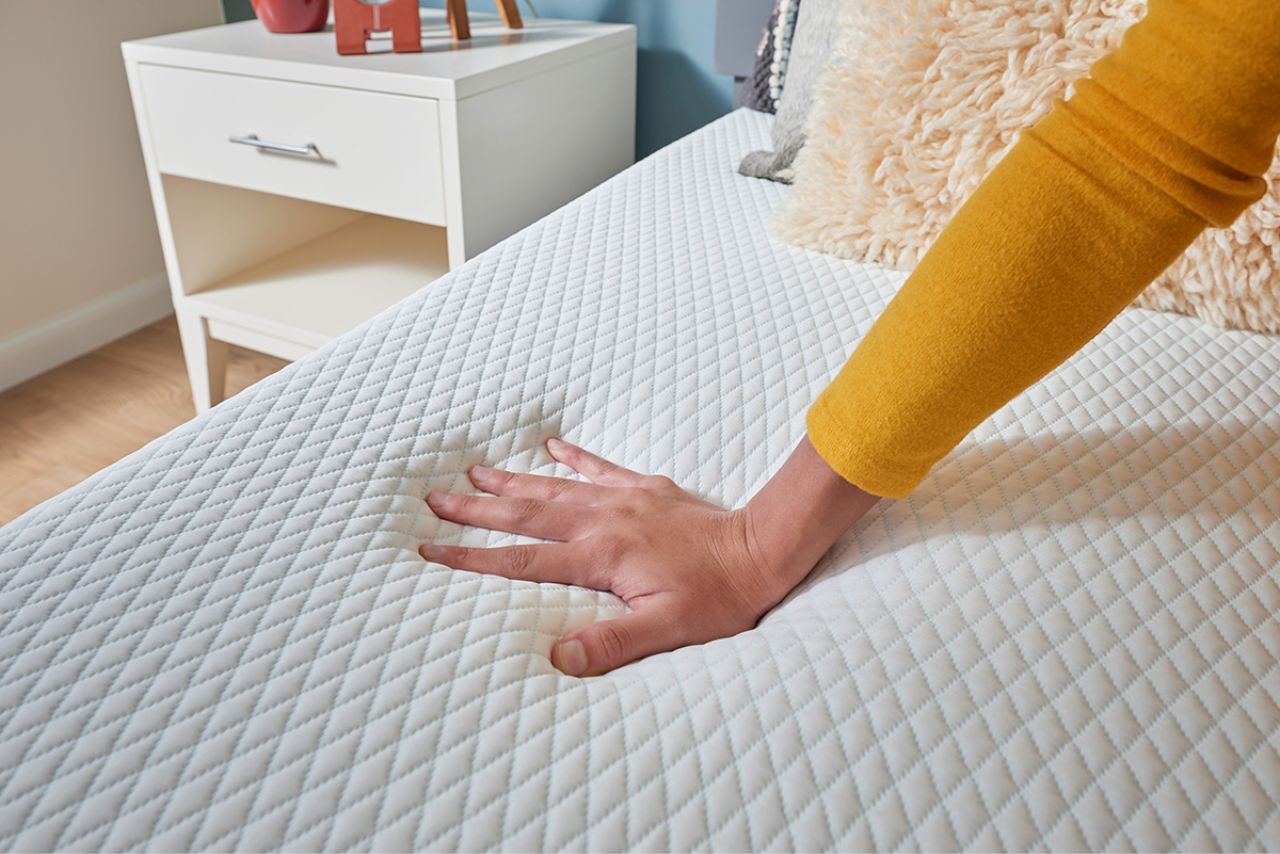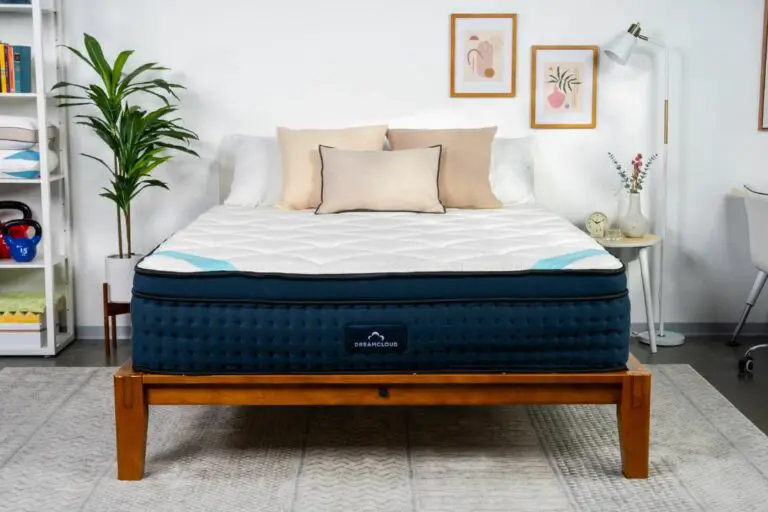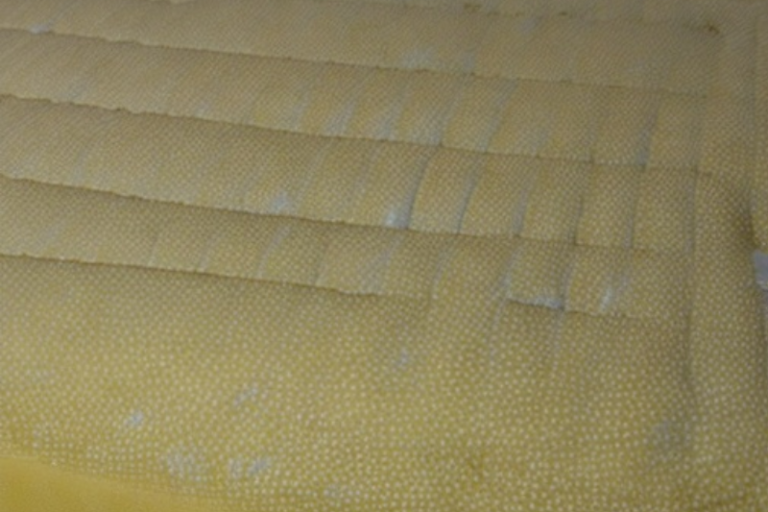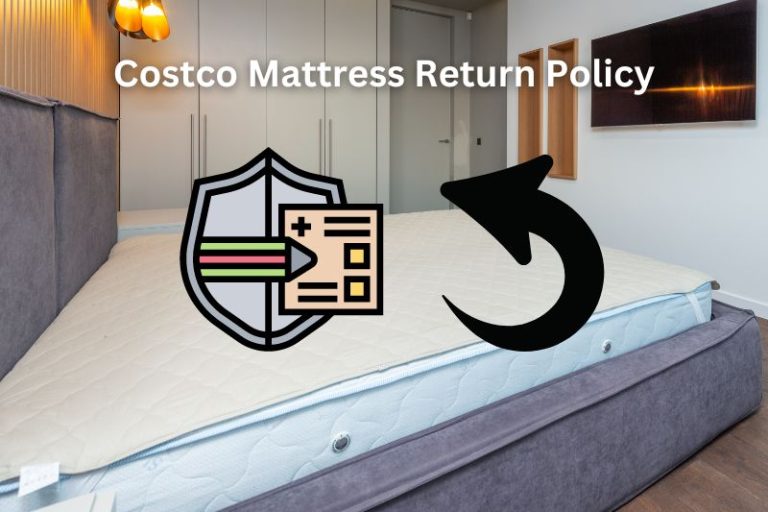Can You Put a Memory Foam Mattress on Top of a Box Spring?

Can You Put a Memory Foam Mattress on Top of a Box Spring?
Yes, you can place a memory foam mattress on top of a box spring, but it’s important to ensure the box spring is in good condition and provides adequate support to prevent sagging or damage to the mattress.
You can put a memory foam mattress on top of a box spring. Many people wonder if it’s possible to use their existing box spring with a new memory foam mattress, and the answer is yes.
While traditional innerspring mattresses require the support of a box spring, memory foam mattresses are designed to work well with various types of foundations, including platform beds and adjustable bases.
However, it’s essential to ensure that your box spring is in good condition and provides adequate support for the weight of the memory foam mattress.
In this article, we will explore why using a box spring with your memory foam mattress can be beneficial and provide some tips for ensuring optimal comfort and longevity. So let’s dive in!
What is a Memory Foam Mattress?
- A memory foam mattress is a type of mattress that is made from viscoelastic foam, which conforms to the shape of your body.
- It was originally developed by NASA in the 1970s to improve seat cushioning and crash protection for astronauts during space travel.
- The material used in memory foam mattresses reacts to heat and pressure, allowing it to mold itself around your body’s contours.
- This provides personalized support and helps relieve pressure points, making it an ideal choice for people with back or joint pain.
- Memory foam mattresses are known for their ability to distribute weight evenly, reducing motion transfer between sleeping partners.
- They can also help alleviate snoring by promoting better spinal alignment and reducing airway blockages.
Memory foam mattresses offer several advantages over traditional spring mattresses:
- Pressure relief: The viscoelastic properties of memory foam provide excellent pressure point relief, helping reduce discomfort caused by excessive pressure on sensitive areas like shoulders, hips, and lower back.
- Body contouring: Memory foam molds itself according to your body’s unique shape, providing individualized support that ensures proper spinal alignment while you sleep.
- Motion isolation: Unlike traditional spring mattresses that transfer motion across the bed when one person moves or gets out of bed, memory foam absorbs movement effectively. This makes it an excellent option for couples with different sleep schedules.
- Allergy-friendly: Memory foam has dense cell structure that discourages allergens like dust mites from accumulating within the mattress. It also resists mold growth due its antimicrobial properties.
However, there are some considerations when deciding whether to place a memory foam mattress on top of a box spring. Keep reading our article to find out more!
What is a Box Spring?
A box spring is a supportive foundation that is typically used with traditional innerspring mattresses.
It consists of a wooden frame and springs or coils that provide additional support to the mattress.
Here are some key points about box springs:
- Purpose: The main purpose of a box spring is to absorb shock and reduce wear on the mattress, thereby extending its lifespan.
- Support: Box springs are designed to offer added support by evenly distributing weight across the surface of the mattress. This helps prevent sagging and promotes proper spinal alignment during sleep.
- Height: A box spring adds height to your bed, making it easier for you to get in and out of bed comfortably.
- Air circulation: Another benefit of using a box spring is improved air circulation beneath the mattress. This can help regulate temperature, keeping you cooler during hot nights.
- Compatibility with memory foam mattresses: While traditionally used with innerspring mattresses, box springs may not be necessary or recommended for memory foam mattresses due to their different construction and support needs.
When considering whether to use a memory foam mattress on top of a box spring, it’s important to check the manufacturer’s recommendations.
Some memory foam mattresses require specific types of foundations or platforms for optimal performance.
Remember that improper support could affect how your memory foam mattress feels and performs over time.
If using a box spring with your memory foam mattress isn’t recommended by the manufacturer, alternative options like platform beds, adjustable bases, or solid foundations can provide adequate support while maximizing comfort.
Ultimately, understanding what a box spring does and its compatibility with different types of mattresses will help you make an informed decision when setting up your sleeping arrangement.
Understanding Compatibility:
When it comes to using a memory foam mattress on top of a box spring, there are a few factors to consider in order to ensure compatibility.
Here are some key points to keep in mind:
- Box Spring Condition: Before placing a memory foam mattress on your box spring, make sure it is in good condition. Check for any signs of wear and tear such as sagging or broken springs. A sturdy and supportive box spring will provide the necessary foundation for your mattress.
- Box Spring Type: Not all box springs are suitable for use with memory foam mattresses. Traditional coil-based box springs may not offer enough support or even weight distribution, which can affect the performance and durability of the mattress over time. It’s recommended to choose a solid platform base or an adjustable bed frame specifically designed for use with memory foam mattresses.
- Mattress Weight: Memory foam mattresses tend to be heavier compared to traditional mattresses due to their dense construction. Ensure that your box spring is capable of handling the weight of both the mattress and any sleepers without compromising its structural integrity.
- Warranty Considerations: Placing a memory foam mattress on an unsuitable foundation may void its warranty, so it’s essential to check the manufacturer’s guidelines beforehand.
- Comfort Preferences: While some people prefer the firmness provided by placing their memory foam mattress directly on top of a solid surface like plywood, others find added comfort by using a combination of both box spring and plywood board under their mattress.
Remember that each manufacturer may have specific recommendations regarding compatible foundations for their memory foam mattresses, so always refer to their guidelines first before making any decisions.
In conclusion, understanding compatibility between your memory foam mattress and box spring is crucial for optimizing comfort and longevity while ensuring warranty validity if applicable.
Benefits of Using a Box Spring:
Using a box spring with your memory foam mattress can offer several benefits, including:
- Improved Mattress Support: A box spring provides an extra layer of support for your mattress, helping to distribute the weight evenly and prevent sagging. This can extend the lifespan of your memory foam mattress.
- Enhanced Comfort: The combination of a memory foam mattress and a box spring creates a comfortable sleep surface that conforms to your body’s contours while providing gentle support. This can help alleviate pressure points and promote better spinal alignment.
- Increased Air Circulation: Box springs typically have slatted or perforated surfaces that allow air to circulate beneath the mattress. This helps in dissipating heat and moisture, keeping you cool and dry throughout the night.
- Noise Reduction: Placing your memory foam mattress on top of a box spring can minimize noise caused by movement during sleep or when getting in and out of bed. The box spring absorbs some vibrations, making for a quieter sleeping environment.
- Easier Bed Access: A standard bed height is around 25 inches from the floor to the top of the mattress with a box spring included, which makes it easier for most individuals to get in and out compared to lower platform-style beds.
- Added Height Options: If you prefer having more height on your bed setup, using both a memory foam mattress and a box spring allows you to achieve this without needing an additional foundation or risers under your bed frame.
It’s important to note that not all mattresses require or benefit from using a box spring especially those designed specifically for platform beds or adjustable bases.
Always consult the manufacturer’s guidelines before deciding whether or not to use one with your specific type of memory foam mattress.
Advantages of Placing a Memory Foam Mattress on Top:
Placing a memory foam mattress on top of a box spring can offer several advantages:
- Enhanced Comfort: By adding a memory foam mattress to your box spring, you can significantly enhance the comfort level of your sleep surface. Memory foam molds to the shape of your body, providing personalized support and relieving pressure points.
- Improved Spinal Alignment: Memory foam mattresses are known for their ability to promote proper spinal alignment during sleep. When placed on top of a box spring, they can help maintain natural curvature and reduce the risk of back pain or discomfort.
- Motion Isolation: If you share your bed with a partner who tends to toss and turn during the night, placing a memory foam mattress on top of the box spring can help minimize motion transfer. The dense structure absorbs movement, allowing you to enjoy uninterrupted sleep.
- Longevity: Box springs provide additional support and stability for your mattress by evenly distributing weight across its surface area. This helps prevent premature sagging or wear in your memory foam mattress, ultimately prolonging its lifespan.
- Breathability: Many modern memory foam mattresses come equipped with advanced cooling technologies that promote airflow and heat dissipation throughout the night. Pairing them with breathable box springs allows for better ventilation, ensuring you stay cool and comfortable while sleeping.
- Cost Efficiency: Instead of purchasing an entirely new bed frame or foundation specifically designed for memory foam mattresses, using an existing box spring can be cost-effective without compromising comfort or support.
- Versatility: Placing a memory foam mattress on top of a box spring offers versatility in terms of height adjustment options according to personal preference without sacrificing any benefits provided by both components.
Remember that not all types of mattresses are suitable for use with traditional box springs due to their construction or material composition; however, most memory foam mattresses work well with box springs, providing a range of advantages that can enhance your sleep experience.
Considerations and Precautions!!!
When considering placing a memory foam mattress on top of a box spring, there are a few important considerations and precautions to keep in mind:
- Compatibility: Not all memory foam mattresses are suitable for use with box springs. It is crucial to check the manufacturer’s guidelines or contact customer support to ensure compatibility.
- Box Spring Condition: Before placing your memory foam mattress on a box spring, assess its condition. Make sure it is firm and supportive, without any sagging or damage that could affect the performance of the mattress.
- Supportive Slats: Some box springs come with slats instead of a solid surface. Ensure that these slats are close enough together (ideally no more than 3 inches apart) to provide adequate support for the memory foam mattress.
- Foundation Type: Box springs typically work well with traditional innerspring mattresses but may not be ideal for certain types of foundations such as adjustable bases or platform beds. Verify whether your specific foundation type is compatible with both the box spring and memory foam mattress.
- Warranty Considerations: Placing a memory foam mattress on an improper foundation can void its warranty, so it’s essential to follow the manufacturer’s recommendations regarding compatible foundations.
- Weight Restrictions: Keep in mind that adding a heavy memory foam mattress on top of a box spring may exceed weight limits specified by manufacturers, leading to reduced durability and potential damage over time.
- Proper Ventilation: Memory foam mattresses tend to retain heat more than other types of mattresses due to their dense composition. To prevent excessive heat buildup, make sure there is proper ventilation between the mattress and the box spring—for example, by using breathable fabrics or opting for slatted platforms instead.
- Stability and Safety: Double-check that your chosen setup provides sufficient stability when combining a memory foam mattress with a box spring. Ensure that the mattress doesn’t shift or slide off the box spring during use to prevent accidents and injuries.
By considering these factors and taking necessary precautions, you can ensure a suitable and safe setup when placing a memory foam mattress on top of a box spring.
Always prioritize following the manufacturer’s guidelines to maintain your mattress’s performance and warranty validity.
Tips for Properly Using a Memory Foam Mattress on a Box Spring:
When it comes to using a memory foam mattress on a box spring, there are some important tips to keep in mind.
Here’s what you need to know:
- Check the Condition of Your Box Spring: Before placing your memory foam mattress on top of a box spring, make sure the box spring is in good condition. Look for any signs of wear and tear, such as squeaking or sagging. If your box spring is damaged or worn out, it’s best to replace it before using a memory foam mattress.
- Use a Solid Foundation: Ideally, you should use a solid foundation instead of traditional box springs with slats that may not provide adequate support for your memory foam mattress. A solid platform bed frame or adjustable base can offer better support and prevent sagging.
- Consider Adding Support: If you prefer using traditional box springs but want extra support for your memory foam mattress, consider adding plywood between the mattress and the box springs. This will create an even surface and prevent uneven weight distribution.
- Ensure Proper Ventilation: Memory foam mattresses tend to retain heat more than other types of mattresses due to their dense structure. To promote proper ventilation and prevent overheating, place your memory foam mattress on top of breathable materials like slatted platforms or allow air circulation by elevating the edges slightly.
- Avoid Folding or Bending: Memory foam mattresses are not designed to be folded or bent as this can damage their structure over time. When moving or storing your mattress, handle it carefully without folding or bending it excessively.
- Use Mattress Protectors: To protect your investment and ensure longevity for both the memory foam mattress and the underlying foundation, consider using waterproof and hypoallergenic mattress protectors that provide an additional layer against spills, stains, dust mites etcetera.
Remember, using a memory foam mattress on top of a box spring can provide excellent comfort and support if done correctly.
By following these tips, you can ensure the best possible experience with your memory foam mattress while extending its lifespan.
Conclusion: Can You Put a Memory Foam Mattress on Top of a Box Spring?
It is indeed possible to put a memory foam mattress on top of a box spring. However, there are certain factors that need to be taken into consideration before doing so.
- Firstly, ensure that your box spring is in good condition and provides adequate support for the memory foam mattress. A sturdy and solid foundation is essential to prevent sagging or uneven wear over time. Additionally, make sure that the box spring has sufficient slats or a solid surface to evenly distribute weight and minimize any potential damage to the mattress.
- Secondly, consider the thickness of your memory foam mattress in relation to the height of your bed frame. It’s important to maintain proper alignment and avoid any unnecessary strain on your body while getting in and out of bed. If necessary, you may need to adjust the height by using a low-profile box spring or platform base.
Ultimately, placing a memory foam mattress on top of a box spring can offer additional support and comfort if done correctly. By considering these factors and taking proper care of both your mattress and box spring, you can enjoy restful nights without compromising on quality sleep.






